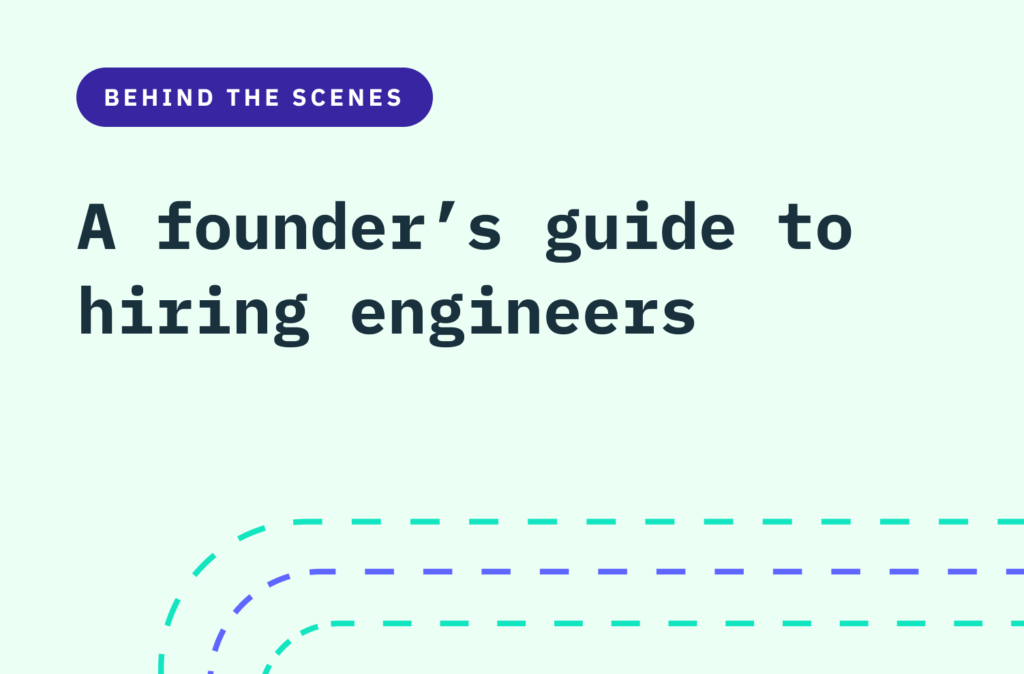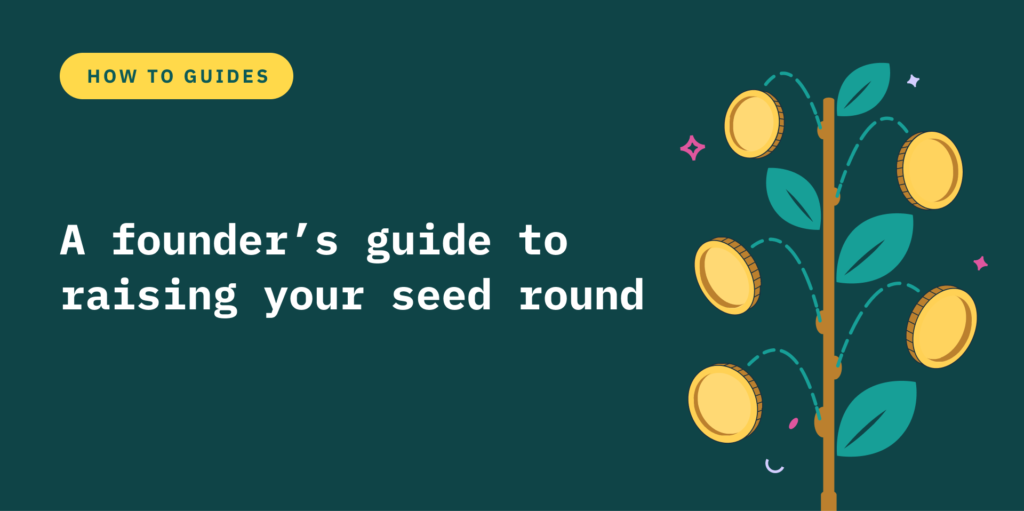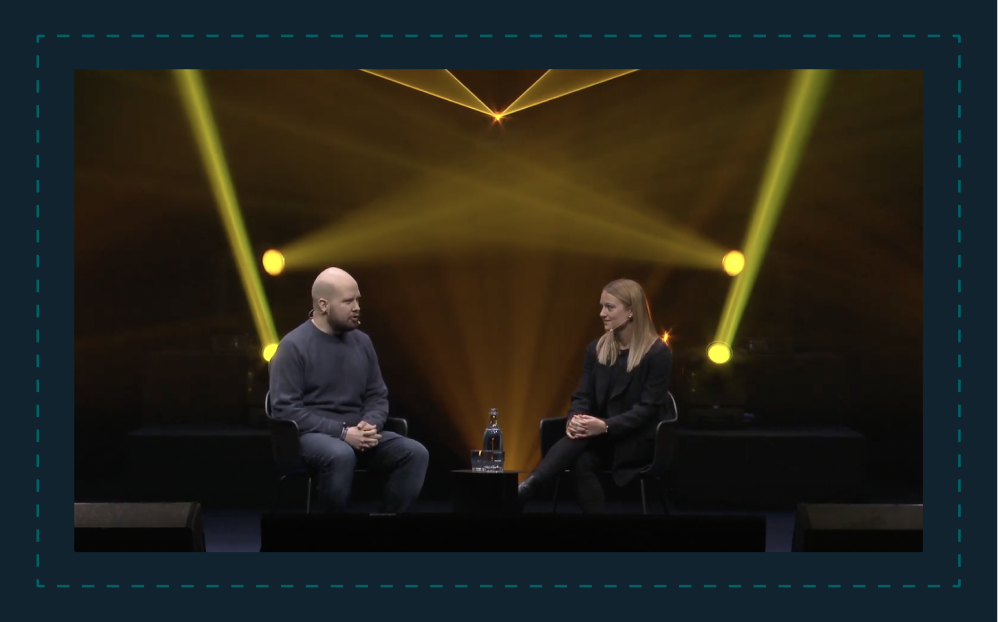Back to blog
5 Lessons for founding designers: what I’ve learned in my first year at Stytch
Product
Feb 17, 2022
Author: Bingrui Tang
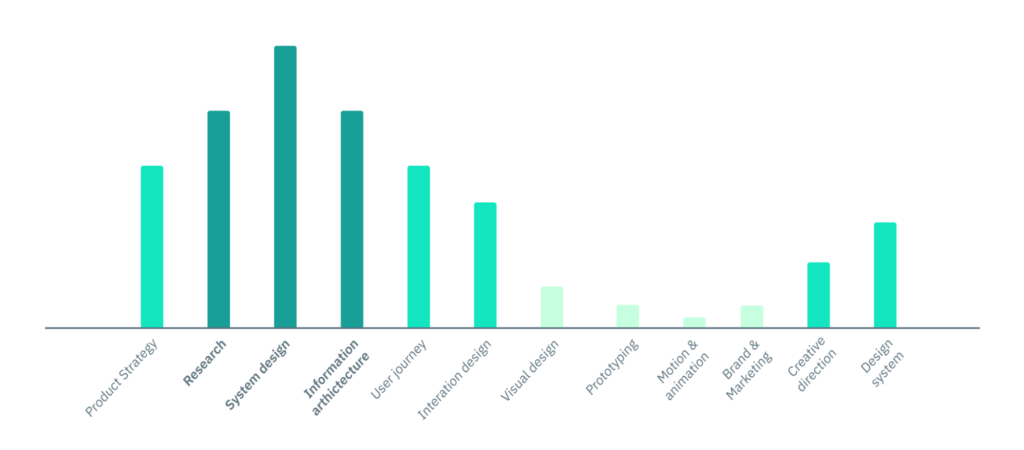
When I joined Stytch as the founding designer in January 2021, the entire company consisted of less than 10 people. One year later, it’s grown to over 40, and I lead a seven-member design team that’s split across product design, brand design, and research and partners with just about every other department.
Looking back, I’ve learned so much. As I chat with others on a similar career path, a few familiar questions keep popping up. Here, I share the five greatest lessons I’ve taken away from this first year and offer some helpful tips for designers facing similar challenges.
1. Defining your role: be honest about your strengths and weaknesses
The best and hardest thing about being a founding designer is that the sky is your only limit. It’s great, because there are so many ways and directions in which to grow. But it’s difficult, too, because there are only 24 hours in a day. If your company is doing well and moving fast, you may feel like you’re constantly playing catch-up in order to make any ground.
I was able to define my role more clearly by creating an organizational structure through which to make key decisions. To begin, I carefully evaluated my skills as a designer, identified my core strengths and weaknesses, and determined where I would have the most impact.
I decided to position myself as the design lead on developer-facing products, as a consultant on consumer-facing products, and as the creative director on branding work. This has given me a good sense of my priorities and greater clarity whenever a project needs additional support.
For the design team, having a transparent understanding of what I’m good at and not so good at also makes conversations about hiring and recruiting a lot easier as we grow our team.
My tip: conduct a thorough self-assessment of your skills as a designer, and don’t pull any punches. You can create your own rubric based on your specific needs or use an existing resource—like this tool from thoughtbot.

My skills assessment
2. Preparing for growth: set up processes ahead of team growth
When your team is small, it’s easy to say, “just ping me on Slack if you need anything.” But as your organization grows, the number of notifications and requests can quickly become unmanageable.
It helped to establish design processes and communication channels as if we were already a larger team, which allowed everyone to develop muscle memory around submitting tickets for requests, leaving feedback before a review, and so on.
In the past year, we’ve set up Linear ticket templates, status pad templates in Figma, formal standards for creating and providing feedback, and a one-pager for aligning on the scope of each project. We also encourage people to ask #team-design whenever they don’t know where to start as a way of spotting gaps in our current structure. This gives us a chance to reinforce our points of contact and quickly iterate on our processes so that they’re scaling along with the company.
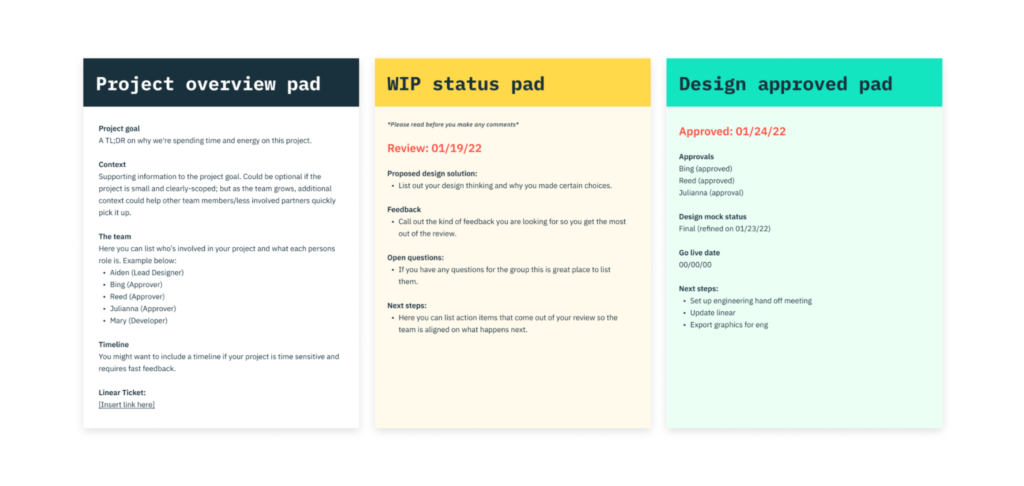
At Stytch, we created notepad templates in Figma to collect stakeholder feedback and keep track of status.
Additionally, when we first started documenting visual components in Figma, we began with a rough outline and let it sit untouched for a few months. As more designers joined the team, we decided to use a components audit as the standard onboarding project for every new hire—encouraging them to go in, nit-pick the missing pieces and inconsistencies, and take liberties to improve them. It’s been great seeing the motivation and enlightenment that comes from doing such foundational work with little guidance—and it’s enabled the further expansion of our team.
My tip: let go of perfectionism, and embrace change. As your team scales, be proactive about making necessary updates to your processes, and motivate everyone to step in and help.
3. Expanding your team: start early, and be prepared to pivot
Your team may have breathed a sigh of relief after bringing you onboard as the first designer, but the second hire can be even trickier.
My first phone screening with a potential product design hire was in March, two months after I joined Stytch, and our actual second hire signed in October—half a year later. In between, we adjusted our strategy several times, tweaking everything from our ideal candidate profile to how we structured the hiring process.
We replaced the take-home project with a working session—sharing live prompts and having a two-way conversation around what to do next—to ensure we’re giving the candidate and our team a collaborative experience that’s true to life. With some practice, we were able to get a candidate through the entire hiring process from screening to offer letter within two weeks, which put us in a much better position in this competitive market.
My tip: reduce friction before and during the interview stage. You can use your founders’ and investors’ influence and networks to build credibility while your company is still new and small to offload some of your hard-selling work as the hiring manager. You should also be mindful of potential biases in your hiring process—like take-home projects that assess candidates based on how much free time they can carve out around other jobs and responsibilities.
As Stytch scales, we want to be extra judicious around our recruiting efforts, thinking through how our team is orchestrated instead of remaining in hyper-hiring mode. We want to take time for new hires to settle in and give the existing team a chance to define the next areas of growth before ramping up to the next round of hiring. This will set us up for success in the long run.
4. Optimizing for impact: establish viable work rhythms, priorities, and expectations
I’m often asked, “how do you manage your time?” But I like to rephrase the question and ask myself, “how can I land the most impact within a set amount of time?”
By focusing on impact instead of time, I get a more fluid framework to check in with myself and my team. That way, I can evaluate the goals, timeline, and expectations for my work and feel empowered to make the necessary call—whether it’s investing more in an initiative or letting go.
My tip: define the specific role you’ll play and outcome you expect for every project. A design role can have very different implications depending on the scope or situation. By identifying your ideal contribution to each task, you’ll be able to quickly and clearly lay out priorities, so you can get things done without burning yourself out.

Before we had dedicated support from other departments (e.g. Product), I broke down my role and expectations according to the impact I wanted to have on each project.
5. Managing energy: practice mindful scheduling and self-care as a favor to yourself and others
Working at a startup is a marathon with frequent sprints, and your performance is evaluated at each stretch and across the race as a whole. Over the past year, I’ve learned how to pace myself with appropriate cross-training so that I’m constantly gaining strength without overexerting myself.
For instance, I began managing my energy by auditing and updating my calendar, so the variety of my work can motivate me throughout the week. Kicking off relatively quietly on Monday gives me the bandwidth I need to wrap my head around all that’s been going on, and builds up excitement to connect with my team through one-on-ones on Tuesday.
After a long Tuesday of meetings, spending Wednesday diving into meaty topics often feels refreshing and fulfilling. On Thursday, I often schedule updates and demos across the team, which is energizing. And I set aside a chunk of time each Friday to review the pain points and opportunities that emerge situationally as the company grows. Taking some moments to look through the haze can turn that chaos into an afternoon of fun, adventure, and fresh ideas.
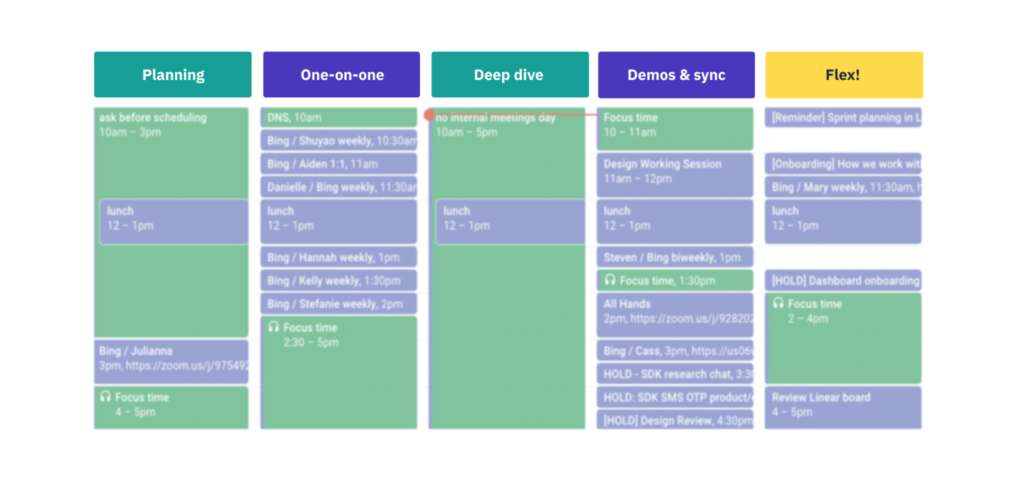
I rearranged my calendar to better balance my energy and keep a sustainable work rhythm across each week.
My tip: arrange your schedule intentionally with a rhythm that works for you, set strict boundaries around your off-hours, and actively plan vacations. In addition, allow yourself small breaks like short walks between tasks. A breather usually only takes 15 to 30 minutes, but making a decision in the wrong headspace can cause hours or even days of damage.
Key takeaways
Here are the steps I found most helpful as I learned the ropes as a founding designer:
- Capacity: complete an honest self-evaluation of your design skills and shortcomings so you can better define the role you’ll play in each type of project.
- Organization: set up working processes early, even if that means they’re initially unpolished. There will always be room and time for improvements later.
- Hiring: make the process easy on your candidates and your team by keeping interviews and assessments collaborative and true-to-life.
- Productivity: identify the impact you want to have on every project rather than the time you want to spend, so you can easily map out and manage your priorities.
- Self-care: schedule your time and tasks in a way that balances your energy and gives you space to take breaks and restore your focus.
Reflecting on this past year, I’m fascinated by how my time at Stytch has helped me to evolve both personally and professionally. I’ve not only become a better leader and collaborator but also, I’ve defined critical areas where I can continue to grow. I’m very excited to see where this journey will lead us next.
Authentication & Authorization
Fraud & Risk Prevention
© 2025 Stytch. All rights reserved.
